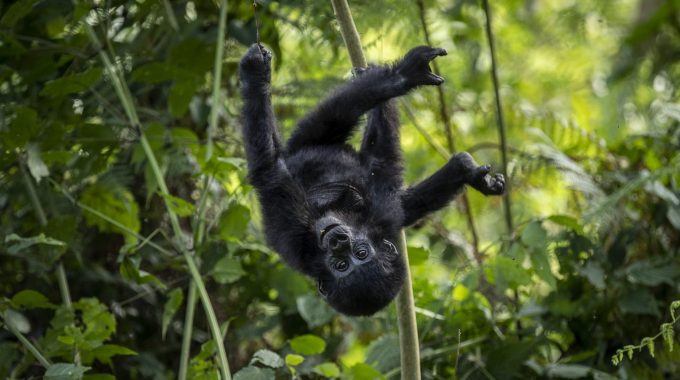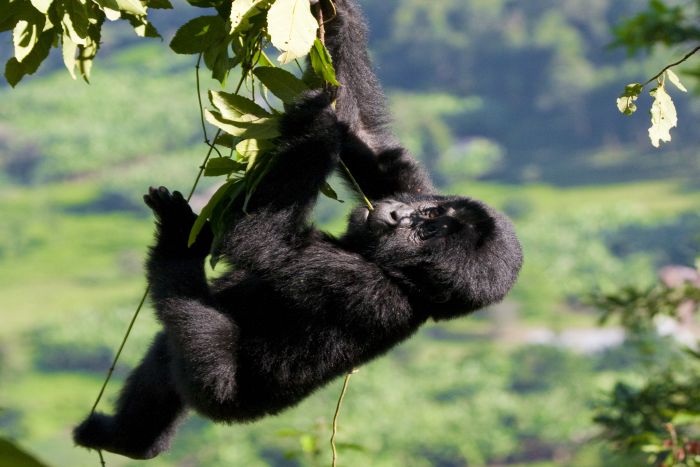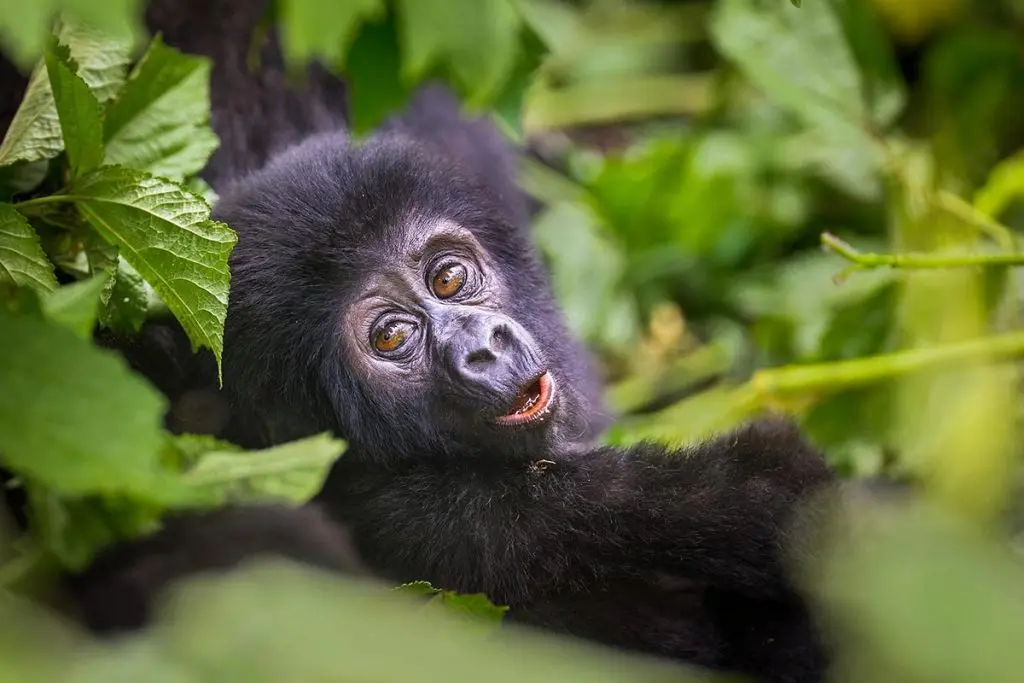
Best Time to See Gorillas in Rwanda and Uganda
Best Time to See Gorillas in Rwanda and Uganda
Rwanda and Uganda offers one of the world’s most incredible wildlife encounters in the world, gorilla trekking. A trek through the emerald forest to see mountain gorillas of Africa is a dream experience for many nature and wildlife enthusiasts.
But the question is, when is the best time to see gorillas in Rwanda and Uganda
Remember – Timing is crucial for this grand experience.
“The dry season (December to February) and June to September) is generally the best time to see gorillas in Rwanda and Uganda as it offers drier trails and an easier gorilla trekking experience”
But, gorilla treks are possible year-round, and each season has its own charm.
In this blog, we delve into the best time to see gorillas in Rwanda and Uganda, exploring the pros and cons of each season. Also, we discuss how weather patterns impact your experience, helping you choose the ideal timing for your unforgettable gorilla trek.

Why Timing is Everything
Gorilla Trekking Safari in Rwanda’s Volcanoes National Park and Uganda’s Bwindi Impenetrable National Park and Mgahinga Gorilla National Park involves navigating challenging rainforests and uneven mountainous terrain. The dry seasons make trails more manageable and increase visibility.
Primarily, mountain gorillas are foraging under dense canopies and are easier to locate when the vegetation isn’t as lush. Also, this means the best time to visit Uganda or Rwanda to see gorillas is during the dry season, with drier weather conditions and clearer skies.
Trekking typically begins early 8:00 am, with briefings at the park headquarters at 7:30 am. Mornings, particularly during wet periods, can be chilly. Consider this if you are sensitive to the cold. However, some gorilla tours brave the elements and enjoy the potential for lower prices during the rainy season.
Factors to Consider when choosing the best time to see gorillas in Rwanda and Uganda
Choosing the best time to visit Uganda or Rwanda to see mountain gorillas involves several aspects.
- Peak Vs Low Seasons: The availability and cost of gorilla permits are directly affected by time of the year.
- Weather: How rain or shine might impact your trek is essential
- Your Preferences: When can you travel, and do you prefer fewer crowds even if the weather isn’t as comfortable.
By carefully putting these factors into consideration when planning your gorilla trekking adventure, you will have a memorable and successful experience.
Gorilla Trekking Month-by-Month: Best Time to See Gorillas in Rwanda and Uganda
January (Peak/dry season) – Best Weather for gorilla trekking
January is part of the short dry season, making it one of the best times for gorilla trekking in Uganda and Rwanda. Trails are less muddy, allowing for easier treks through the rainforest. Temperatures may be warm hovering around highs of 84°F (29°C) to a low of 67°F (19°C). But their higher altitudes of Bwindi Impenetrable National Park and Volcanoes National Park offer a cooler, comfortable trekking experience. Due to the tropical climate, expect some rainfall, but it is not heavy enough to disrupt your adventure.
Since this is a peak season, it is crucial to book your gorilla permits and accommodations well in advance. If you have wanted to combine gorilla trekking with a classic safari experience, January is an excellent time to see gorillas in Uganda and Rwanda and explore the stunning wildlife of Masai Mara and Serengeti National Park.
February (Peak/dry season) – Best Weather for gorilla trekking
February is still a dry season, this month sees a slight decrease in crowds making it a fantastic time for a gorilla trek in Uganda and Rwanda. You will enjoy the benefits of the most favorable weather, with dry trails and excellent visibility. Temperatures in February in gorilla parks typically range from highs of 85°F (29°C) to lows of 69°F (20°C). Also, this is a prime month for birdwatching and classic safaris in East Africa, as wildlife tends to gather around shrinking water sources before the March rains arrive.
As the dry season reaches its end, the vegetation thins, making it easier to spot wildlife on game drives. February is one of the best times to see gorillas in Uganda or Rwanda and experience the thrill of witnessing savannah predators in action during the calving season in the Ndutu Plains of Northern Serengeti.
March (low/wet season) – Bad Weather for gorilla trekking
March marks the start of the long rainy season and low travel period in Uganda and Rwanda. Daytime temperatures average around 23°C/73°F, with morning temperatures hovering around 12°C/54°F. While some travelers might hesitate to visit, gorilla trekking in Uganda and Rwanda remains possible and offers unique advantages.
If you are looking for the best time to see gorillas in Uganda or Rwanda on a budget, March is worth considering. You will likely find lower prices of accommodations and you may have greater availability for gorilla permits.
In this month, the trekking trails can become muddier, however the rain usually comes in shorter bursts, leaving ample time for a rewarding gorilla encounter in Africa. Be prepared with waterproof gear, and enjoy the quieter trails and potentially more relaxed atmosphere at safari lodges.
April & May (low/wet season) Worst weather for gorilla trekking
April and May receive the heaviest rainfall of the year, with daytime temperatures averaging around 23°C/73°F and mornings around 12°C/54°F. The rains make trails practically challenging for gorilla trekking and game drives. While not the ideal time for most travelers, there are advantages if you are flexible and don’t mind the rain. Permits are more readily available, and you will find excellent deals on accommodation.
For travelers who enjoy lush landscapes and aren’t deterred by wet weather, the vibrant green scenery this season offers a unique beauty for photography. If you are combing gorilla trekking with a classic safari, the Serengeti – Mara safari might still be enjoyable with shorter afternoon showers and stunning green landscapes.
June & July (peak/dry season) Best weather for gorilla trekking
June and July starts the prime gorilla trekking season in Rwanda and Uganda, offering the best weather conditions. Expect minimal rain and easily navigable trails with temperatures ranging from highs of 78°F (25°C) to lows of 67°F (19°C). As a popular time to visit, book your gorilla permits well in advance and be prepared for potentially higher costs.
Despite the peak season, the limited group sizes of gorilla treks ensure an incredible wildlife encounter. Also, lodges fill up quickly, so plan your accommodation accordingly.
With lingering lushness from the rainy season, June is fantastic for combining gorilla trekking with scenic photography and game viewing. From July onward, the drier conditions make it the best time to see gorillas in Rwanda and Uganda while combining it with the excitement of the wildebeest migration in the Masai Mara and Serengeti.
September (end of peak season) Fairly good weather for gorilla trekking
This month marks the transition from dry to rainy season, making weather less predictable. Expect some showers during your gorilla trek, but dry spells are still possible. Typical temperatures range from highs of 80°F (26°C) to lows of 67°F (19°C).
While gorilla trekking remains possible year-round, be prepared for rain when visiting Uganda or Rwanda for gorilla trekking in September.
If you are lucky enough to catch a dry spell in September, it is still considered peak season, so book, your gorilla permits and accommodations early to avoid limited availability.
October & November (low/wet season) Worst weather for gorilla trekking
October marks the beginning of the shoulder reason, offering deals on lower lodges and better availability. However, expect frequent, heavy rainfall. While temperatures stay warm, averaging highs of 78°F (26°C) and lows of 66°F (19°C), navigating trails can be difficult, making this a less-than ideal time to see gorillas in Uganda or Rwanda.
Despite the trekking challenges, this season offers unique benefits. Norther Uganda is home to the incredibly stunning Murchison Falls at its best. Also, November starts off the prime birdwatching season (lasting until April) as migratory species arrive.
If you are interested in both gorillas and birding, this might be the best time for you, despite the rainy conditions. To maximize your wildlife encounters, consult with a safari expert.

December (peak/dry season) Best weather for gorilla trekking
December marks the return to the dry season with temperatures averaging highs of 80°F (27°C) and lows of 66°F (19°C), making it another fantastic time for gorilla trekking in Rwanda and Uganda. Trails are easier to navigate, and the lush landscapes offer incredible photo opportunities. With optimal weather conditions comes increased demand, especially around the Christmas Holidays.
If you are dreaming of a December Gorilla Adventure, it is better to plan ahead. Book your gorilla permits and accommodation well in advance to secure your spot during this popular travel season. It is a wonderful time for families and those seeking a break from winter to experience the magic of the East Africa rainforests.
In conclusion: The best time to visit Rwanda and Uganda to see gorillas is during the dry season from June to September. During this time, the weather offers optimum gorilla trekking experience as the trails are relatively navigable and the rainforests have less downpours.
